
Sinusitis is a disease caused by inflammation of the void in the human skull( cranial sinuses).Typically, the inflammatory process occurs in the sphenoid sinus, located between the eyes, but sometimes other vapors also suffer. Sinusitis requires immediate treatment, as the effects of the disease can be very dangerous. The disease is equally hard to tolerate both adults and children.
Contents
- 1 Types of sinusitis. Acute and chronic forms
- 2 Features of the course of the disease in the child
- 3 Causes and factors of occurrence
- 4 First signs and symptoms
- 5 Diagnosis of the disease
- 6 Treatment methods
- 7 Treatment with folk remedies
- 8 Possible consequences and complications
- 9 Video
Types of sinusitis. Acute and chronic forms of
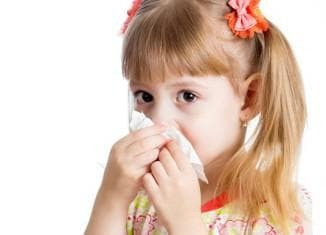 Species of sinusitis are associated with the place where inflammation occurs. There are 4 types of paranasal sinuses, which give the disease a second, more local name:
Species of sinusitis are associated with the place where inflammation occurs. There are 4 types of paranasal sinuses, which give the disease a second, more local name:
- maxillary, or paired maxillary( sinusitis);
- paired wedge-shaped( sphenoiditis);
- paired frontal( frontal);
- of the sinus bones( etmoiditis).
There is also a pansinusitis - a disease in which all paranasal sinuses become inflamed simultaneously.
Sinusitis can have 2 forms - acute and chronic. Once a disease occurs, it has a sharp form, and if it is insufficient or untimely, it quickly becomes chronic.
Important! Do not delay sinusitis treatment for a day. Any delay can cause serious complications.
Features of the course of the disease in the child
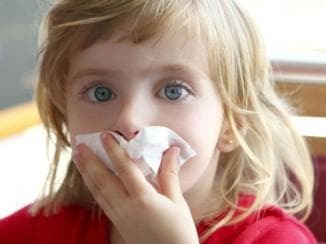 Children are strongly predisposed to the emergence of all forms of sinusitis. So, sinusitis can occur in a one-year-old child, and ethmoiditis - and even earlier. Children with a front face often reach the age of 5, and sphenoiditis often occurs after 10 years. This is due to the fact, at which stage of the child's life some sinuses develop.
Children are strongly predisposed to the emergence of all forms of sinusitis. So, sinusitis can occur in a one-year-old child, and ethmoiditis - and even earlier. Children with a front face often reach the age of 5, and sphenoiditis often occurs after 10 years. This is due to the fact, at which stage of the child's life some sinuses develop.
Additional danger for children's health - a small width of drainage and ventilation holes between the nasal cavity and the paranasal sinuses( they are called acustia).The narrower the opening, the faster it closes during the swelling of the mucous membrane. This contributes to the rapid accumulation of inflammatory fluid in the sinus and the onset of sinusitis.
Remember that the pharyngeal tonsils( adenoids) of the baby can also contribute to the onset of sinusitis. Hypertrophic adenoids should be removed immediately, even if they do not interfere with the child's breathing.
Causes and factors of occurrence of
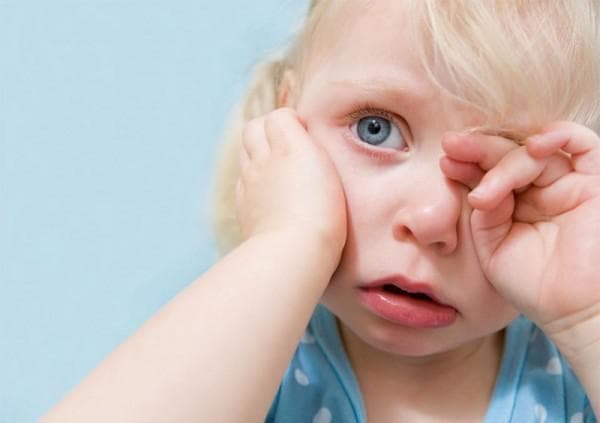
The chance of getting sinusitis increases if the child is already sick with a sore throat or group
The disease can have a viral or bacteriological basis. Sometimes fungal sinusitis occurs, but because of the similarity of symptoms, it is also considered bacteriological. Sinusitis, which occurs due to viruses, is called catarrhal, and because of bacteria and fungi - purulent. The origin of the disease has practically no effect on its treatment. The principle of treatment( both traditional and folk) remains unchanged.
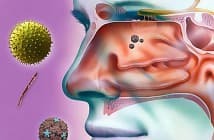 What is the treatment of maxillary sinusitis, is indicated in this article.
What is the treatment of maxillary sinusitis, is indicated in this article.
What are the reviews about Albucid in the common cold in children, indicated in the article.
How to quickly cure a cold and runny nose is indicated here: http: //prolor.ru/n/ lechenie-n / kak-vylechit-nasmork-za-odin-den.html
The chance of a disease is greatly increased if a person suffers from angina, flu or other diseases from the groupARVI.Especially it is typical for children, but adults need to be extremely cautious.
First signs and symptoms of
The main signs of sinusitis that allow diagnosing the disease at an early stage:
- permanent nasal congestion;
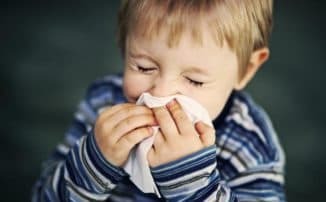
- yellowish / greenish mucus in the nose and throat;
- a painful view of the nose, eyes, forehead and cheeks;
- cough, especially at night.
These signs in themselves are not a guarantee of sinusitis. The child may not breathe well, look sick and cough at night, even with a simple sore throat, as well as with a number of other diseases from the ARVI group. But do not hesitate and hope for the best. Once you see that the child has
symptoms similar to sinusitis - lead him to the doctor. The doctor in any case will prompt the correct vector of treatment, even if the disease is much less serious than you expected.
Other symptoms of sinusitis are more rare, but they too can not be ignored:
-
 olfaction impairment;
olfaction impairment; - elevated body temperature;
- bad breath odor;
- state of permanent fatigue;
- sore throat.
All these symptoms are equally characteristic for both children and adults. Specific signs of sinusitis, which would be characteristic only for a certain age group, does not exist. Moreover, the symptomatology of all types of disease looks about the same. Even if the frontal sinuses are inflamed, the throat will be ill first.
Important! Even if the main symptoms of the disease do not, it is worth to carefully assess the overall health of the child. Perhaps he has more rare symptoms, which also signal the onset of sinusitis.
Diagnosis of the disease
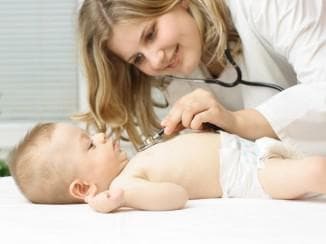 To determine sinusitis can be at home. If the child has a permanently stuffy nose and appears unhealthy color, unlike the usual nasal mucus - perhaps this is sinusitis. Adults usually have a prolonged runny nose( at least a week) before the onset of the illness, and only then does pain appear. In children, this pattern is not very common, becausesinusitis in them has the property of being sudden.
To determine sinusitis can be at home. If the child has a permanently stuffy nose and appears unhealthy color, unlike the usual nasal mucus - perhaps this is sinusitis. Adults usually have a prolonged runny nose( at least a week) before the onset of the illness, and only then does pain appear. In children, this pattern is not very common, becausesinusitis in them has the property of being sudden.
Often the disease is signaled by the fact that a child who has almost recovered from an ARVI suddenly fell ill with renewed vigor. When this "second wave" appears, you should immediately contact the doctor. And in general, as soon as you notice symptoms similar to sinusitis - immediately go with the child to the clinic. What to do when there is no runny nose after ARVI, is stated in the article.
If a doctor diagnoses sinusitis in an adult, then most often he will do a nasal mucus puncture. For children this method is not recommended. Most often, doctors diagnose children's sinusitis with the help of ordinary external examinations. Sometimes X-rays may be needed to determine the disease.
Methods of treatment
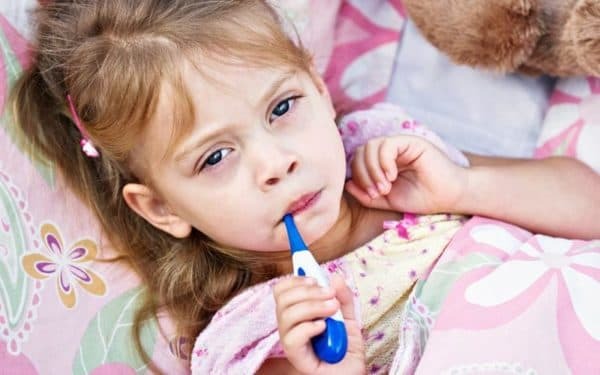
As a rule, with sinusitis, a sick child is not hospitalized. The necessary care can be provided at home
Sinusitis, like most inflammatory diseases, can be effectively cured with the help of folk remedies. But you should not rely on non-traditional medicine. It is best to combine it with the treatment that the doctor will prescribe. This is the best option for getting rid of sinusitis in a short time. So, how to treat sinusitis at home?
Most often, fast treatment of the common cold in children involves the use of antibiotics. But if the disease has a viral base, then antimicrobials are not required. The main goal is to remove the causative agent of the disease. This can help drugs such as amoxiclav and amoxicillin. Often they use azithromycin, doxycycline and clarithromycin instead.
Such treatment can be used both in the hospital and at home. As a rule, professional care is not required for the patient, but if you want to constantly learn about changes in the child's health status - a stationary treatment course will not be superfluous.
Important! Children of preschool age should use antibiotics in the form of syrups or suspensions.
Treatment with folk remedies
 It is best for the treatment and prevention of sinusitis suitable plants such as Kalanchoe and eucalyptus. But before applying the popular recipes found on the Internet from the common cold, consult your doctor. It is possible that they are not the best way for a child or for a particular type of disease.
It is best for the treatment and prevention of sinusitis suitable plants such as Kalanchoe and eucalyptus. But before applying the popular recipes found on the Internet from the common cold, consult your doctor. It is possible that they are not the best way for a child or for a particular type of disease.
You can also use cotton swabs soaked in decoction from the leaves of eucalyptus and string, as well as the flowers of St. John's wort and violets. The composition of herbs in different recipes can vary, but these ingredients remain the main ones.
Many people believe that to get rid of sinusitis, you need to rinse your mouth or nose with a decoction of some herbs. This is not entirely true, for, for example, the affected sinuses at the front do not participate at all in the rinse. Experiment with folk remedies should not be. They, of course, do not harm, but also will not bring much profit( at least until they are approved by the doctor).
Possible consequences and complications of
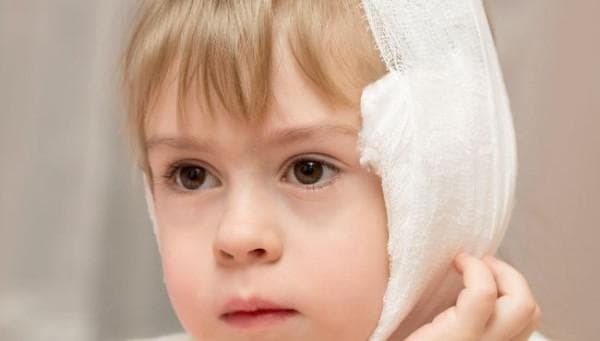
Inflammation of the ears is one of the possible unpleasant complications of sinusitis
If you start a sinusitis to a chronic condition or just linger with treatment, then a whole series of unpleasant complications can appear. Here are the most basic of them:
- a variety of ear infections;And here's how to treat ears and what means you can learn by reading the article about drops in the ears with otitis Otipaks
- vision impairment;
- is an inflammation of the membranes of the brain( meningitis).
Bacteria and viruses that cause sinusitis, can often cause the child and other diseases. They are not as dangerous as meningitis, but they can threaten the health of the whole organism. So, you need to treat sinusitis immediately, before he has time to go to the stage of complications.
Other unpleasant consequences are associated with the eyes and skull. It can be a podnekostnechny abscess, periostitis eye sockets, visual neuritis, puffiness of cellulose, shell abscesses and even abscesses of the brain. Sometimes such complications lead to a lethal outcome. The complications themselves occur in about 10% of cases, usually due to inadequate or untimely treatment. But the chance of a lethal outcome with them is quite substantial.
Video
Tips for the correct treatment of a common cold in a child you will find in this video:
Any inflammation inside the head is dangerous, but sinusitis is the first. In addition to painful sensations, it can cause a number of unpleasant consequences, it will be very difficult to cope with. In the treatment it is necessary to trust the doctor and antibiotics written by him, and folk medicine can be used only for prevention, in combination with traditional methods of treatment.
Remember! Sinusitis is not fatal. But you do not need to run it to the stage when complications can occur, several times more serious than the disease itself. Treat the child immediately, and everything will be fine!
